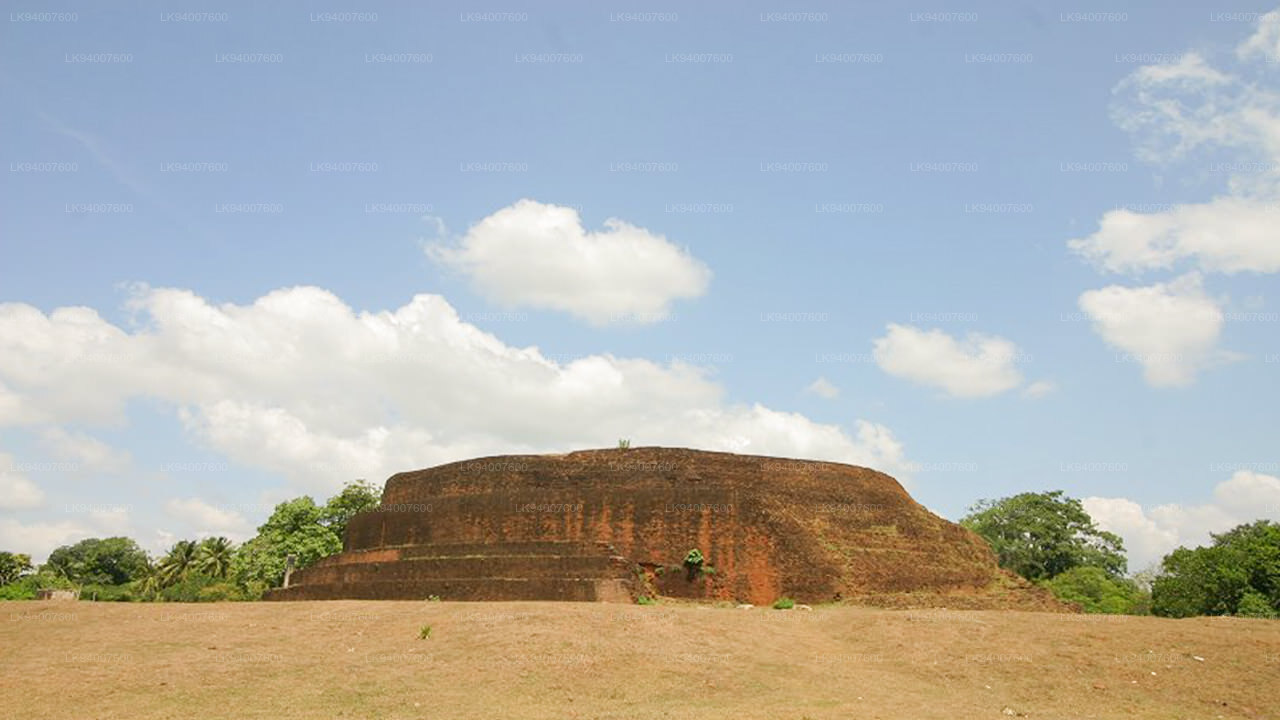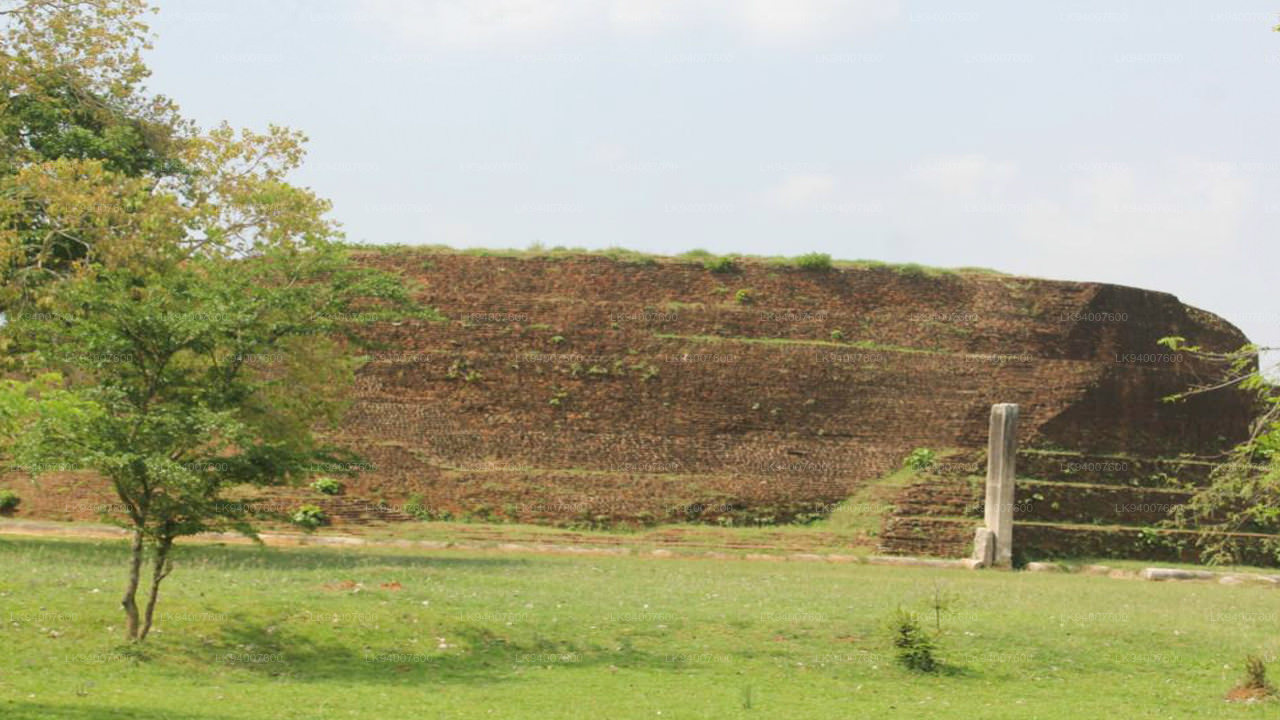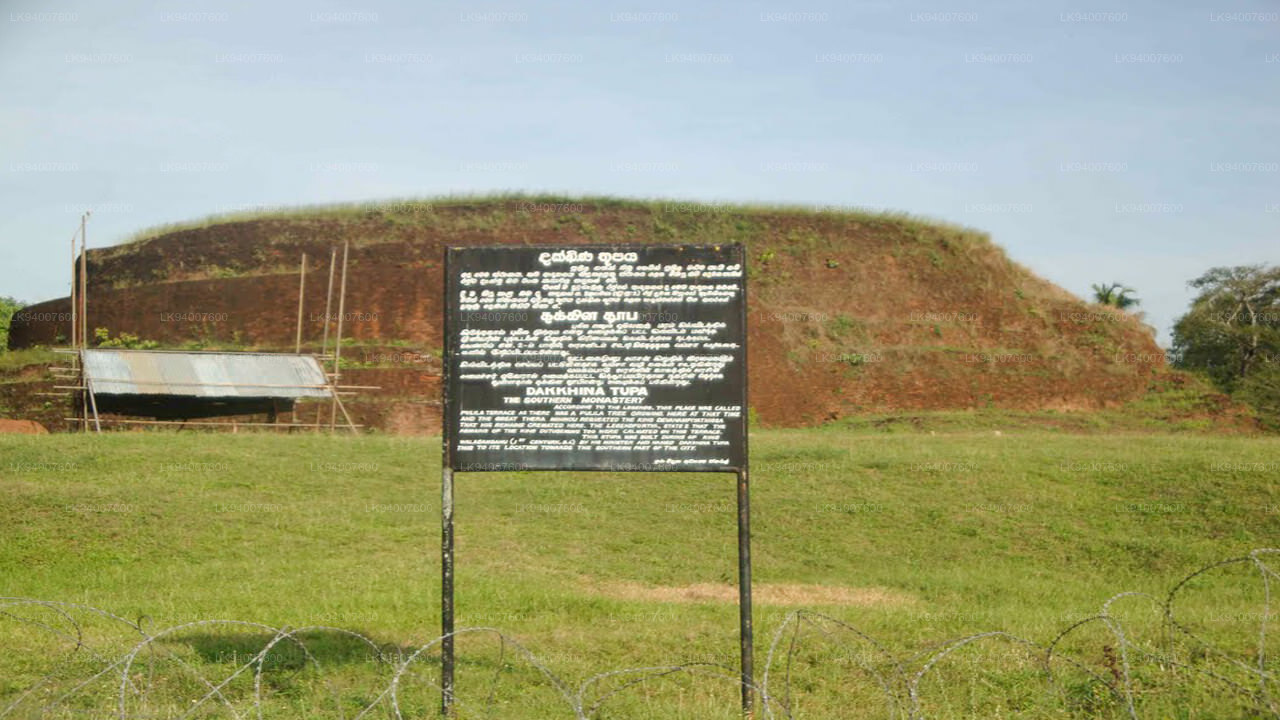
Città di Anuradhapura
Anuradhapura appartiene alla Provincia Centro-Settentrionale dello Sri Lanka. Anuradhapura è una delle antiche capitali dello Sri Lanka, famosa per le sue rovine ben conservate dell'antica civiltà lankese. La città, oggi Patrimonio dell'Umanità UNESCO, si trova 205 km a nord dell'attuale capitale Colombo, in Sri Lanka.
Dakkhina Stupa



Dakkhina Stupa
Dakkhina Stupa is a 2nd-century BC large brick Stupa in Anuradhapura, Sri Lanka. Earlier thought to be a monument of King Elara, it was later identified as the Stupa of ancient Dakini (Dakkhina) Vihara by Senarath Paranavithana with the help of a Brahmi inscription of the 3rd century A.D. unearthed from the ground between the southern and western Vahalkadas of the Stupa.
This structure was for centuries locally known as the tomb stone of king Ellalan, known as Elara Sohona, which was worshipped by Tamils and Sinhalese. However, some were not agree with this identification it is generally accepted that this Stupa has been built over the cremation site of King Dutugemunu.
History
According to the legends this site was known as the Pulila terrace as there was a growing Pulila tree at that time period and the thero, Mihindu had requested from the King Devanampiya Tissa (307 BC – 267 BC) to cremate his remains here. The legend further states that the remains of King Dutugamunu were also cremated in this terrace. It is said that this Stupa was constructed and named as Dhakkina thupa by a minister during the reign of King Valagamba (103 BCE and c. 89–77 BCE)
Informazioni sul distretto di Anuradhapura
Anuradhapura appartiene alla Provincia Centro-Settentrionale dello Sri Lanka. Anuradhapura è una delle antiche capitali dello Sri Lanka, famosa per le sue rovine ben conservate dell'antica civiltà cingalese. La città, ora Patrimonio dell'Umanità UNESCO, si trova 205 km a nord dell'attuale capitale Colombo, in Sri Lanka. Nella città sacra di Anuradhapura e nelle sue vicinanze si trovano numerose rovine. Le rovine consistono in tre classi di edifici: dagoba, edifici monastici e pokuna (stagni). La città possedeva alcuni dei sistemi di irrigazione più complessi del mondo antico; situata nella zona arida del paese, l'amministrazione costruì numerose cisterne per irrigare i terreni. La maggior parte dei civili è cingalese, mentre nel distretto vivono anche tamil e mori dello Sri Lanka.
Informazioni sulla provincia centro-settentrionale
La Provincia Centro-Settentrionale, la più grande del paese, copre il 16% della superficie totale del paese. La Provincia Centro-Settentrionale è composta da due distretti chiamati Polonnaruwa e Anuradhapure. Anuradhapura è il distretto più grande dello Sri Lanka. La sua superficie è di 7.128 km². La Provincia Centro-Settentrionale ha numerose potenzialità per gli investitori che desiderano avviare le proprie attività, in particolare nei settori dell'agricoltura, dell'industria agroalimentare e dell'allevamento. Oltre il 65% della popolazione della Provincia Centro-Settentrionale dipende dall'agricoltura di base e dall'industria agroalimentare. La Provincia Centro-Settentrionale è anche chiamata "Wew Bendi Rajje" perché nella provincia si trovano più di 3.000 serbatoi di medie e grandi dimensioni. Sri Maha Bodiya, Ruwanweli Seya, Thuparama Dageba, il monastero di Abayagiri, Polonnaruwa Rankot Wehera e Lankathilake sono luoghi di interesse.











